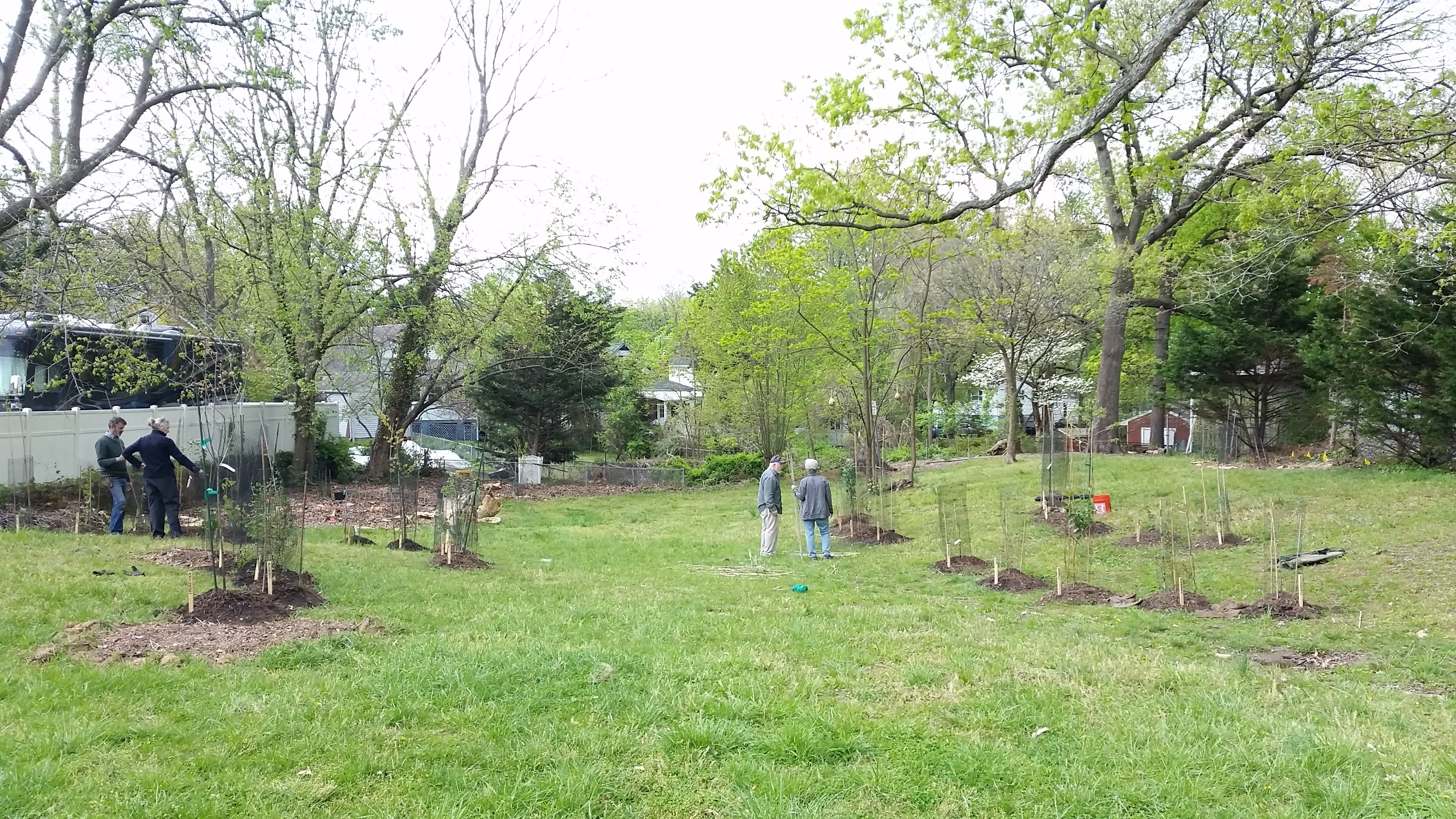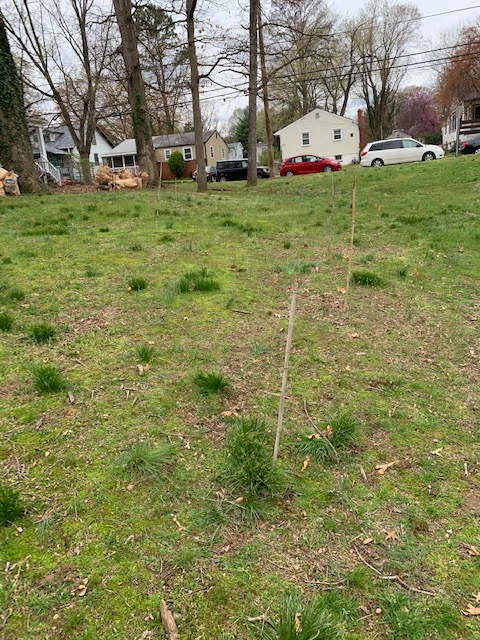Welcome to the Mount Rainier Community Food Forest

The Mount Rainier Community Food Forest at 31st Street Park was designed by a group of volunteer residents to provide sustenance for humans and wildlife in a design that mimics the vegetation layers of a woodland ecosystem. In many instances, we have chosen native plant species that help to sustain the native ecosystem that surrounds you. Mount Rainier – both the city and its residents – encourage native planting in our yards and city properties through a native plant network that helps us do our part to steward this little corner of the planet.
Instead of dividing the land into traditional, individual community garden plots, volunteers cultivate the food forest together and invite the public to harvest what is grown. The Green Team and Tree Commission steward the park, with the participation of other volunteer residents.
We hope to achieve harmony between humans and the rest of the natural world, rather than attempt to grow bushels of produce.
This is what the park looked like before the work began (not much here for either humans or wildlife):

Why plant a food forest?
Do you know where your food comes from? Most of the food we eat is grown in a monoculture, needing the constant use of water, fertilizers and pesticides. Even organic veggies are grown as a single crop. In the wild, by contrast, nut and fruit trees provide shade for berry bushes, climbing vines, perennial herbs and vegetables. The soil is continuously nourished, teeming with life, holding moisture, storing carbon, and providing nutrients to the plants. A cultivated food forest, the world’s oldest form of land use, mimics the growing conditions of a woodland ecosystem.
Learn about other food forests:
Forested. Located in Bowie, Maryland. Lincoln Smith, Founder.
Beacon Food Forest | A Community Permaculture Project. Located in Seattle, Washington. Believed to be the largest food forest on public land in the United States.
Festival Beach Food Forest in Austin, Texas
Read even more about food forests:
Bennett, Chris. Southeast Foraging. Timber Press, 2015.
Hemenway, Toby. Gaia’s Garden: A Guide to Home-Scale Permaculture. Chelsea Green, 2000.
Jacke, Dave, and Toensmeier, Eric. Edible Forest Gardens. Two volume set. Chelsea Green, 2005.
Thayer, Samuel. Incredible Wild Edibles: 36 Plants That Can Change Your Life. Forager’s Harvest Press, 2017.